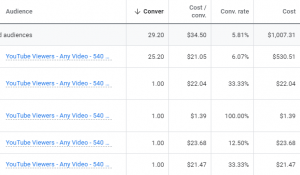
If you’re in business today with a recurring revenue model, of the biggest questions you must ask is “where are the gaps in my revenue engine?”
You may also be seeing an all-too-common trend: customer churn and/or a slowing trajectory of revenue growth.
I talk to CEOs about this topic all the time, and the patterns have proven to be pretty consistent. Most companies have revenue engines that run on delicately intertwined gears of new logos, retention and upsell/cross-sell.
If one gear isn’t working effectively, the others have to work harder and exude more effort in order to make up the difference.
How We Did this at Influitive
I spent over five years on an amazing journey with Influitive where I had the privilege of seeing this process in action. And let’s be honest, Influitive isn’t the exception – it’s the rule.
Companies all over the map have experienced retention issues that cause new logo teams to have to push harder and close more revenue in order to close the gap. This is the kind of problem that everyone in Customer Success stays up all night thinking about how to avoid.
It’s one of the worst problems to have – an old leaky bucket with holes you have to close up to stay afloat.
My goal at Influitive was to systematically increase retention and to create growth opportunities within existing accounts. I also wanted to find a better way to help customers see value and quantify what they were receiving.
The real mission here was to ensure that the incredible effort and dollars that were put towards winning new logos were not only worthwhile, but were returned at an even higher multiplier.
Here’s how we tackled the problem:
First, a few of us got together began to scrutinize the problem. We did this until we fully understood our customer segments, our typical customer journey, and the critical touch-points at which we needed to engage a customer. It was critical for us to take a step back and understand the big picture of our entire customer base and it’s unique “personalities” in order to best manage them.
Pro tip: Once you reach 30+ customers you can no longer afford an ad hoc approach, you must look at as much data as possible (i.e. customer growth metrics, on-boarding times, retention metrics, company sizes, customer LTV, overall time spent in support and managing customers) so start tracking data now! One major goal is to find common stages that every customer must follow along your customer lifecycle. For example with on-boarding, you may find 6 key steps that every successful customer has gone through. While timing might vary, these 6 steps don’t. This is an exercise that needs be done once you reach about 120+ customers again for the purpose of segmentation and becoming more efficient and focused when managing your customers.
The more you can track and learn from real data, the better outcomes and confidence you’ll get from experiments and changes.
Armed with this info, we began to formalize the key questions we would need to ask customers as soon as they became customers, 2-3 weeks post-launch and 6 months before they renewed.
It’s important to note here, that while we looked at a huge bag of clients, we paid special attention to both our most successful clients, and those that were struggling the most. The key was discovering the trends that correlated with success and failure.
Learning from Our Process
Along the way, we uncovered a few core factors that every Customer Success and Account Management team should have as part of their process:
1. Get executive buy-in early and often within your customer base. Loop in the executive sponsor/decision maker/influencer with key metrics as much as possible. Even if it’s just an email update, any touchpoint is better than nothing.
2. Make your main user feel like a superstar. When your administrator does something awesome – share that with as many people in their company as possible. Their wins are your wins.
3. Ask about the renewal early and often, even if you know the answer is “no.” Get the “no” and work from there. If you know there’s a risk of non-renewal when there is still months left on the contract, you have a long time to re-focus their goals and change their outlook.
4. Seek to understand your customers’ company goals, and how your product or service helps them achieve those goals.
5. Explore potential areas for growth within an account early and often. The best way to really know if a company is happy is if they refer you to their colleagues and want to show off what they are doing. If you aren’t getting introductions to other team members, departments or divisions within your first 8 months, ask why.
One Golden Rule to Make this Possible:
When I was building up my team, one of my biggest challenges was to transfer my knowledge and skill-set to a growing, junior team. Read my last post on the importance of high-potential hires.
One of the best ways I got them up to speed was by encouraging their natural sense of curiosity.
I had a rule: never end a conversation with a client with questions.
If you don’t understand why a client said something, ask why – there is never any harm in asking questions, and what you face to learn is monumental.
3 Steps to Follow:
If you are having any challenges around customer retention or account growth:
1. Understand your customers, their lifecycle with your company, critical touch-points, the different segments and how to best support them.
2. Start with a deep analysis of your most successful and unsuccessful customers and find the key factors or trends that resulted in their ultimate state. Mapping this out with processes, scripts, and flow charts is absolutely essential. Visualizing the outputs of this analysis may be hard work, but is worth its weight in gold!
3. Once you have clarity into the reasons behind success, and solutions planned out to ensure more customers replicate that success, make sure you have a process by which to scale it. In my opinion, this comes down to how you train your team.
Business & Finance Articles on Business 2 Community
(130)
Report Post





